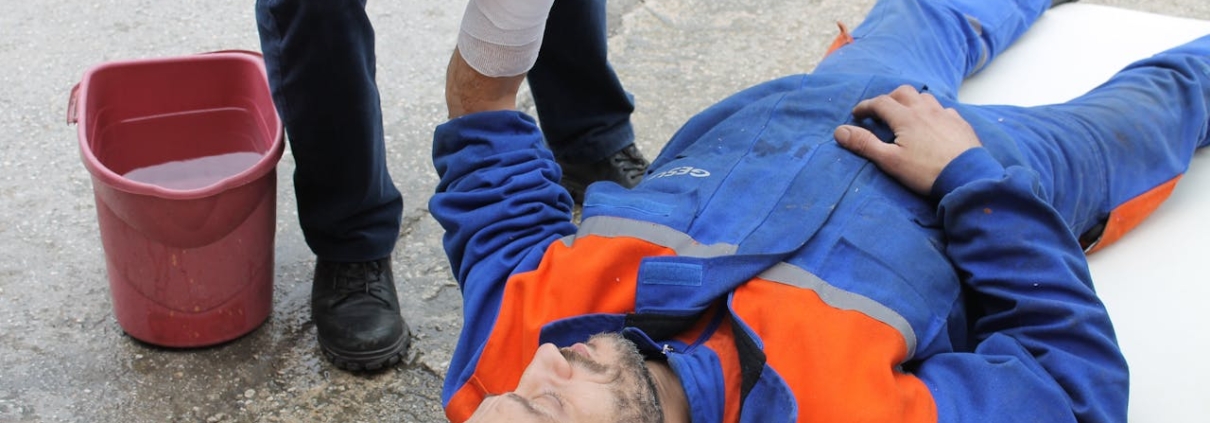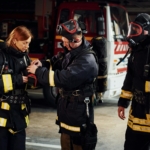How To Successfully Rescue A Fallen Worker
Rescuing a fallen worker is a critical task that requires calmness and precision. Imagine you’re on a construction site, and suddenly a colleague falls and is suspended by their harness. Knowing what steps to take next can make a big difference. This isn’t just about quick response; it’s about ensuring the safety of both the rescuer and the worker. Understanding the process helps prevent further injuries and promotes a safe working environment. It’s always better to be prepared for these situations, as they can arise without warning.
Let’s explore why having the right knowledge and training is so important. In today’s fast-paced work sites, accidents can happen unexpectedly. Being prepared empowers you to take action swiftly and safely. Whether you’re involved in site management or work at heights regularly, having a sound rescue strategy is vital. This means being familiar with the necessary equipment and knowing how to use it efficiently.
Understanding the Risks
Fallen worker incidents can occur in many sectors, from construction sites to warehouses with high shelving or beam structures. Workers often face risks when working at heights or in complex environments, leading to potential falls. Understanding these scenarios helps anticipate and mitigate risks.
Here are some common situations where workers might fall:
– Unstable Scaffolding: Workers face risks if scaffolding is not properly constructed or inspected.
– Improper Harness Use: A harness is a safety tool, but incorrect use or attachment can lead to falls.
– Slippery Surfaces: Wet or uneven surfaces increase the likelihood of slips and falls.
– Poor Visibility: Limited visibility due to lighting or weather can contribute to accidental missteps.
The consequences of improper rescue techniques can be severe. Not only does it put the fallen worker at greater risk, but it can also endanger the rescuer. Panic, rushing, or using incorrect techniques can cause additional harm. Knowing the right approach ensures that everyone involved remains as safe as possible.
Preparing for a Rescue
Preparation is a crucial part of any rescue operation. It starts with having the right gear on hand and knowing how to use it. Key items include harnesses, helmets, ropes, and communication devices. Each piece plays a role in ensuring a safe and successful rescue.
– Harness and Lanyard: These keep the worker secure during recovery.
– Rescue Rope: Used for lowering or raising a fallen worker safely.
– Helmet: Protects against any additional falling debris.
– Communication Devices: Ensures clear coordination between team members during a rescue.
Equally important is the development and understanding of a comprehensive rescue plan. Having a clear plan helps everyone involved know their roles and responsibilities, minimising chaos in an emergency. Regular training and drills reinforce team readiness, ensuring that actions are swift and efficient when a real incident occurs. Remember, a well-prepared rescue team is more likely to carry out a safe and effective recovery, reducing risks for everyone involved.
Step-by-Step Rescue Procedure
Executing a rescue requires a clear and structured approach. Each step in the process must be carefully followed to ensure the safety of everyone involved. Here’s how to carry out a safe rescue:
1. Assess the Situation: Before jumping in, look at the overall situation. Ensure that the area is secure and there are no immediate hazards like loose equipment or overhead dangers.
2. Communicate with the Worker: If the worker is conscious, talk to them. Reassure them and try to assess their condition. Understanding their state helps you plan your actions.
3. Assemble Your Team: Make sure everyone knows their role. Assign tasks like securing the area, handling equipment, or contacting emergency services if needed.
4. Use Proper Equipment: Once everything is set, use the appropriate gear like ropes, harnesses, and pulleys to reach the worker. Avoid shortcuts that might compromise safety.
5. Perform the Rescue: Carefully lower or raise the worker to safety. Make sure movements are calm and controlled to avoid further injury.
Safety considerations are paramount. It’s important to avoid rushing, which can lead to mistakes. Clear roles and communication are key in maintaining order during the rescue.
Post-Rescue Protocol
Once the rescue is complete, it’s not time to relax just yet. Certain steps should be taken to address the next phase of care. Immediate actions following the rescue are crucial in ensuring the wellbeing of the worker and learning from the incident.
– Medical Evaluation: Ensure that the worker is evaluated by medical personnel. Even if they appear unharmed, a professional assessment is necessary to rule out hidden injuries.
– Incident Documentation: Thoroughly record the incident’s details. Include the time, location, what occurred, and actions taken. This documentation is important for understanding what happened and improving future safety protocols.
– Debrief the Team: After the incident, gather the team to discuss what went well and what could be improved. This helps in refining rescue strategies and preparing for future situations.
Stay Safe with Proper Training
Regular training and drills are fundamental to maintaining readiness. When a team is well-trained, they respond more effectively under pressure. This not only enhances the safety of the workers but also boosts confidence across the team.
Consistent training allows rescuers to stay familiar with techniques and equipment, reducing the chances of errors during actual incidents. It’s beneficial to work with experts who can provide guidance and ensure you’re following best practices. With this level of preparation, you’ll be ready to manage emergencies with skill and care.
By understanding risks, preparing thoroughly, and executing each step with precision, you greatly enhance safety outcomes during a rescue. It’s all about being equipped with knowledge and skills to react efficiently when seconds matter most.
Enhance your team’s emergency response capabilities with specialised rope rescue training provided by Access Unlimited. Our expert-led courses equip you with the skills and confidence needed to perform safe and effective rescues. Stay ready for any challenge by investing in comprehensive training today. Let us help you build a safer work environment.



